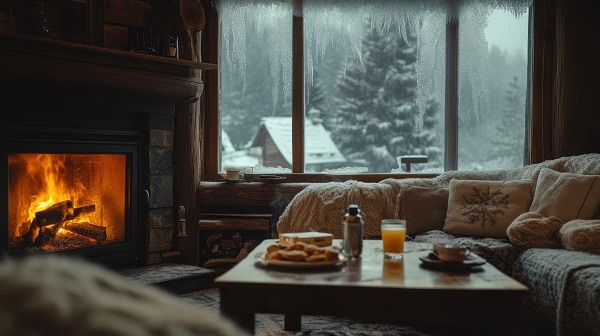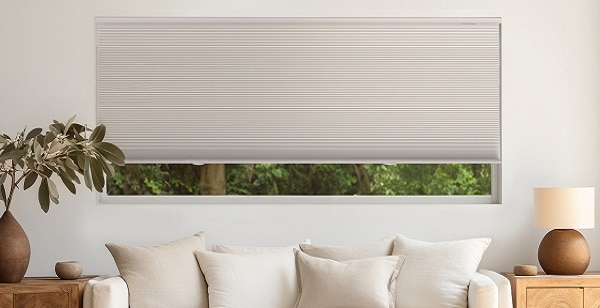Swirling winds, brisk days and a sharp light descending into low angles remind us to prepare for the winter chill. Cellular Shades are one of the best ways to create an energy efficient home. These pocketed shades trap air at your windows to keep warm air in and cold air out. Choose between a single cell or double cell, depending on how much insulation you desire. Perfect for blanketing your windows and regulating inside temperatures all year long!
![]()
There are two aspects to consider when increasing energy efficiency.
R-Value
The R-Value refers to the shade’s ability to insulate. A higher R-Value indicates a more robust insulating shade that will keep energy bills low. Ideally, this value should range between 4.76 to 4.55.
Solar Heat Gain Efficiency
Solar Heat Gain Efficiency (SHGE) measures how much solar energy enters into your home. SHGC is expressed as a number between 0 and 1. This is a tricky number. To keep your house warm in the winter, especially in northern climates, a higher SHGC is preferred so the sun’s energy can be used for heating. Look for a number between 0.15 to 0.19. Look for a lower number for homes in warmer areas, ideally from 0.12 to 0.10, to reduce unwanted heat buildup.
Both the R-Value and the SHGC can be balanced to lower your energy bill as much as possible and maximize the efficiency of your Cellular Shade.
![]()
Don’t let this technical talk dissuade you from maintaining a warm home. Just remember that Cellular Shades can deliver up to a 22% reduction in heat transfer during the winter months. Every Cell Shade has varying amounts of protection, so do your homework if you are serious about efficiency. Investigate the above two elements, along with your type of window (hopefully double pane), plus your choice of window covering to add up to a warmer home.
![]()
Covering Arched Windows
Arched windows can be showstoppers, but they’re not always easy to cover. By the time winter rolls around, these windows can be forgotten. For insulation, light control or privacy concerns, Bali makes an Arched Cellular Shade that’s a perfect fit. They’ll hug those curves like a winter coat for even more insulation. Coordinate them with your existing Cellulars for a matching look.
![]()
Blackout Cells
Don’t forget that even in winter the sun can harm fabrics on furniture, pillows and rugs. The Ultraviolet Protection Factor (UPF) represents how well a fabric protects from harmful UV rays. To keep your favorite décor items from fading, select a Cellular Shade fabric with a good UV rating. UV ratings range from 15-50, with the higher number offering you the best fade resistant value. By blocking the most amount of light, Blackout Cellular Shades will also darken your rooms. Perfect for nurseries and bedrooms to ensure the best night’s sleep, but possibly not what you’re looking for in the kitchen. Consider the light and privacy levels that work best for your space.
![]()
Cells have earned their stellar reputation for a sleek minimal look, for our custom sizes from long and skinny to arches to skylights to patio doors, vibrant color or muted shades, and even lively intricate patterns. Cellular Shades that are customized for your home can disappear from view or seamlessly cover the window for the long days ahead. As the season reveals its winter face, Cellular Shades can really reduce your energy bills, which is a gift that keeps on giving!
![]()
Stay warm and tuck in for the frosty days ahead.








